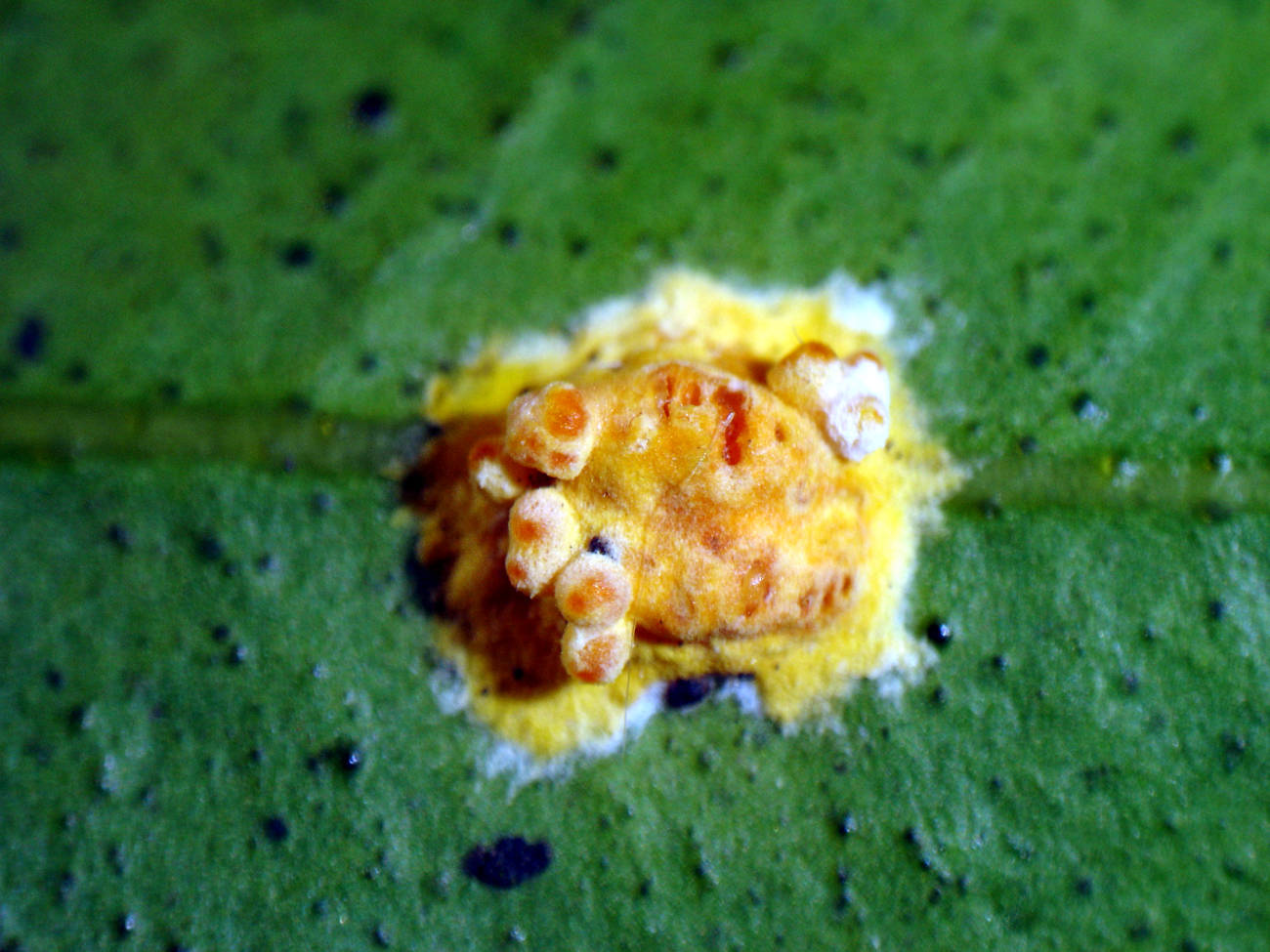
Local name: No local name known
Edibility: Too small and inconspicuous for culinary purposes.
Habitat: On scale insects (Hemiptera: Aleyrodidae) infesting the underside of (usually) dicotyledonous leaves.
Description: Stroma: Circular, usually surrounded by a thin mycelial membrane (hypothallus), white, pale-yellow, sometimes orange, up to 6 mm in diam. Perithecia: In tubercles (containing one perithecium each), solitary or aggregated, arising from the stroma, elongate flask-shaped, with a long neck, 300-450 µm long by 125-350 µm wide. Asci: Cylindrical, up to 450 µm long, ca. 7-15 µm wide, with a distinct, thickened hyaline cap. Ascospores: Divide into part-spores, cylindrical narrow-oval, ends rounded to obtuse, 14-16 µm long x 2.5-4.0 µm wide, occasionally slightly curved.
Comments: This species has a wide distribution throughout Asia. In Bhutan, it is found in forests up to 3500 metres. This species is very variable in gross morphology and is possibly a complex of related species. The asexual state is Aschersonia placenta and this is the more common state that is formed. Often, the Aschersonia will be found on the same stroma as the sexual state.


